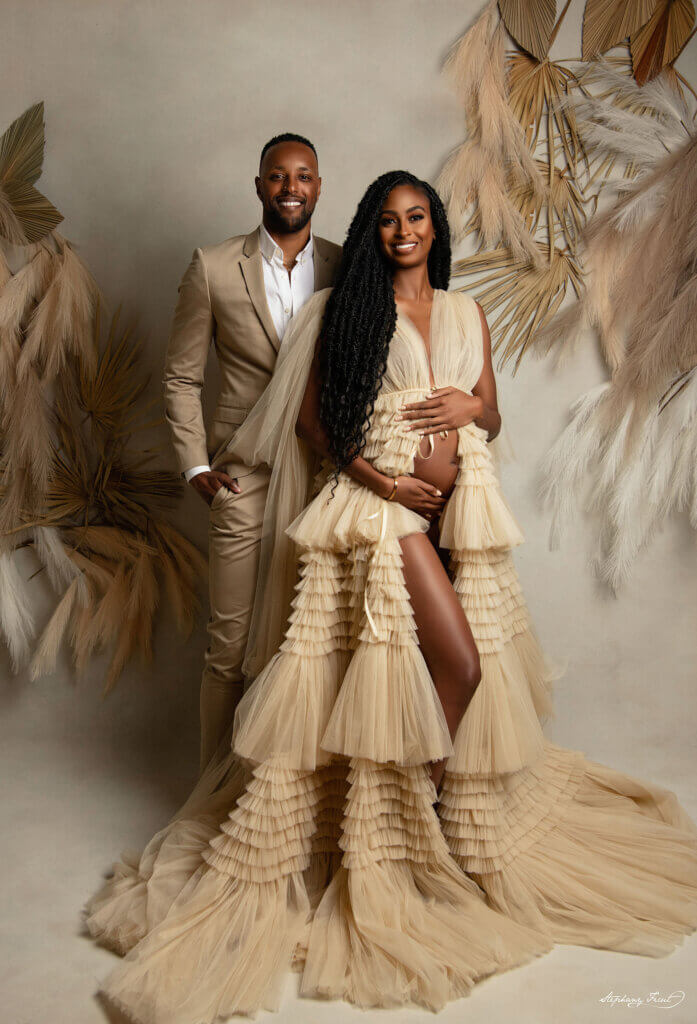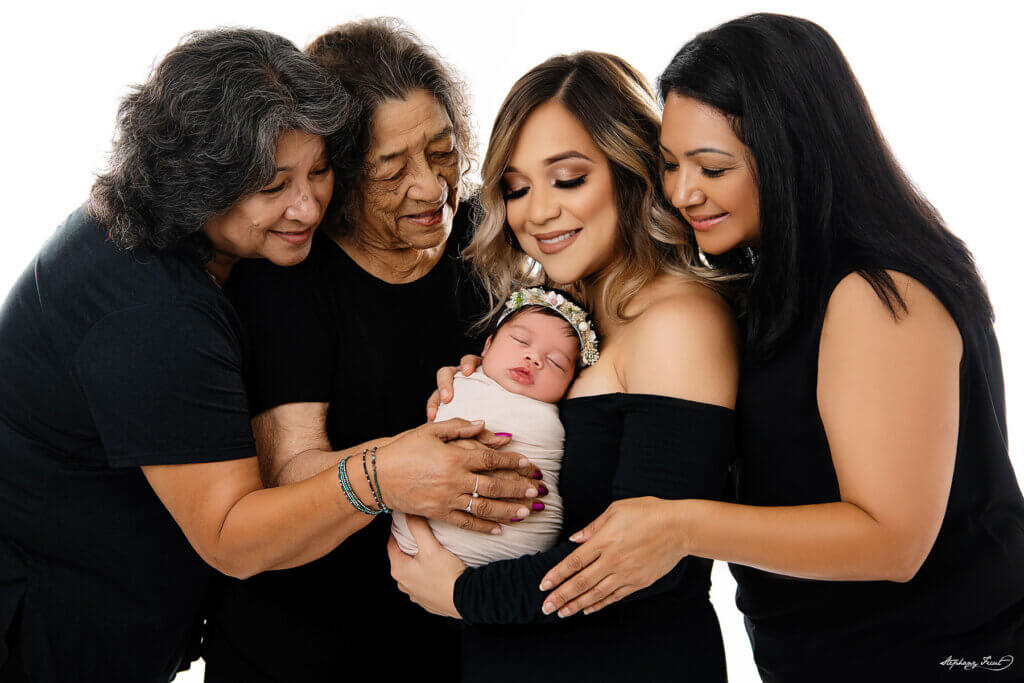
Menu
In this article, part of the series entitled “The Psychology behind Professional Photography,” I’ll cover why people still opt for professional photography despite the accessibility of smartphones and how personality traits (The Big Five) influence how people appreciate and evaluate portraits.
Do people perceive photos differently based on their personality traits? Yes. Stick around to find out how and why.
The first portrait photograph was taken in 1839, which marked the beginning of a new era of communication and self-expression. Fast forward almost two centuries and people worldwide take a whopping 4.7 billion photos a day, or 54,400 every second.
Statistics show that over 90% of photos taken are done with a smartphone—most of them are selfies—which eventually gather dust in galleries and old folders or are uploaded somewhere in the cloud.
It’s true that we rarely pull our smartphones to search through our galleries for that cute impromptu picture of our toddler we took last spring—among the countless others!—only to forget what we were looking for in the deluge of (almost identical) photos.
Plus, there’s the argument that photography negatively impacts our attention and visual processing. By taking a photo, we pay less attention to our environment because our brain gets comfortable with the fact that it can revisit the photo anytime to bring up the information it wants to remember.
However, that's not the case with professional photography, which in itself feels like an event due to the expectations surrounding it. A professional photography session feels like a moment worth remembering since each session is carefully carved into one's schedule.
Also, some photographers advocate for mindful photography—to take it slow, be present, pay attention to your subject, and take as few intentional photos as possible.
Elliot Erwitt said, “It’s about reacting to what you see, hopefully without preconception. You can find pictures anywhere. It’s simply a matter of noticing things and organizing them. You just have to care about what’s around you and have a concern with humanity...”
Similarly, a scheduled professional photography session, either in a studio or outdoors, creates that sense of intentionality. Clients and professional photographers work together to achieve aesthetic beauty worth remembering and keeping—not lost in some phone gallery.
One could argue that in the endless stream of media, photography is for narcissists and entitled social media influencers. This couldn’t be further from the truth.
The main reason why people immortalize certain events and milestones—maternity and newborn sessions, cake smashes, birthdays, and everything thereafter—is that such moments are worth the time and effort.

Plus, hanging fine art photography on your walls is a powerful statement of self-value and confidence that such moments are indeed memorable. As Aaron Siskind put it, “Photography is a way of feeling, of touching, of loving. What you have caught on film is captured forever… It remembers little things long after you have forgotten everything.”
Portrait photography is also deeply social. Researchers have shown that photography is an inherently universal cognitive and social coping strategy, as it has been observed in all cultures and societies worldwide—just like music, language, cooking, etc.
Modern photography is a new mode of art if you compare it to painting or sculpting, for example, which has been around for centuries. But its fundamentals are universal: creativity, emotion, perception, interpersonal communication, and so on. Professional photography can evoke feelings just like a painting or a song would.
People react to what they see. As part of the visual arts, professional photography conveys meaning and emotion relatable across cultures yet not bound by language. You don’t need complex cultural knowledge to understand photos. It’s not rocket science.
Photography is preferred across all generations and appeals especially to younger generations who consider themselves visual learners and explorers. Plus, teenagers and young adults use photos to create a sense of self and identity, usually through social media platforms.
(I’ll address in a future article how social media—not photography—is detrimental to one’s mental health, especially among Millennials and Gen Zs.)
The point is that everybody loves a great portrait. It’s not just for the social butterflies.
You’ve probably heard the myth that professional photography or modeling is for the extroverted. Not true. Professional photography captures and conveys the subtlety—or boldness—of one’s personality. Although photography isn’t exclusive to certain personalities, it showcases traits differently.
Here are the Big Five personality traits—note the mnemonic “OCEAN”—and their definitions:
In an increasingly visual world, Solomon Asch, one of the founding fathers of modern social psychology, stated how “We look at a person and immediately a certain impression of his character forms itself in us. A glance, a few spoken words are sufficient to tell us a story about a highly complex matter”.

And this was in the 1940s, before digital cameras, social media, and the Internet. His assertion stands the test of time, and it’s been proven that digital photography and photo-sharing in cyberspace intensified this phenomenon of judging people based on looks.
Studies show that “perceiving similarity to oneself in others breeds attraction.” It means that birds of a feather flock together.
Indeed, like certain types of looks or poses in professional photographs are associated with personality traits. Also, viewers with differing personality traits perceive the same portrait differently. It feels intuitive, but what gives?
Simply put, someone could absolutely love a high-energy, spontaneous, and unconventional photo, while someone dislikes it for its lack of order or exuberant poses. Art is subjective, right? But what about this subjectivity influences likes and dislikes?
Let’s take people according to their Big Five:
What people judge is usually one’s smile. Known as the Duchenne smile, it is the most authentic expression of joy and happiness. It’s when the smile reaches your eyes and makes the corners wrinkle. But this is a topic for another time.
In addition to evaluating people in portraits, we tend to like the professional photographer, the photographer’s style, and the photography subject if we share some of those traits ourselves.
So, liking a particular maternity photographer means that you relate to or value the photographer’s unique way of expression. Check out this portfolio, and book a fine art photography session.
“But isn’t empathy reserved for Agreeable individuals?”—I’m glad you asked. It’s been shown that people, first and foremost, take photos of people with whom they are emotionally connected. Photos are used to mark significant events in their life and environment.
For example, a four-generation photo or a family photo featuring nicely dressed people smiling brightly at each other reassures individuals that possible arguments or not-so-fine moments are transitory. Despite low seasons or misunderstandings, the love and bond of the family are stronger than any resentment.
Here are some more use cases of how professional photography fosters an appreciation for people. Maternity photography reinforces the truth that the baby was wanted and cared for. That the mother is gone to great lengths to nurture and keep the baby safe.

Every picture tells a story, even for an audience of one—the mother. The message can be either subtle or bold, like “I see you,” “You’re special,” and “You’ve done a great job so far”. It could be argued that it develops a sense of self-esteem.
To a certain extent, children develop a sense of worth. They understand that they are cherished and that the parents made an effort to immortalize such moments. Plus, professional newborn photography and cake smashes are adorable.
Children will grow up looking through photo albums and keepsakes and will want to know more about their heritage, ancestry, and family traditions. Researchers note that photos of older generations give children a sense of social belonging, societal significance, and security.
We create art for your home, making it look like an exquisite gallery of memorable moments. Please check our offer on custom artwork, such as heirloom albums, keepsake portfolio boxes, modern acrylic art pieces, museum-quality handmade canvases, framed wall art, wood art pieces, and wall collections.
One, according to research, chances are you will evaluate people in photos or portraits based on your main personality trait. We’re all unique individuals with different personality traits, and we shouldn’t be too bothered by this fact.
Two, professional photography will never go out of style because it is an inherently universal mode of expression. Sure, tools, trends, and technology will change, but people will always want to capture their best moments—and showcase them on their walls.
If you’ve ingested too much content on psychology, here’s some eye-candy inspiration fresh from the blog:
Looking for the best fine art pregnancy photographer in Dallas? Let’s keep in touch, and follow us on Instagram and Pinterest.
Award winning professional photographer specializing in maternity and newborn photography in Dallas/Fort Worth, Texas
Award winning professional photographer specializing in maternity and newborn photography in Dallas/Fort Worth, Texas